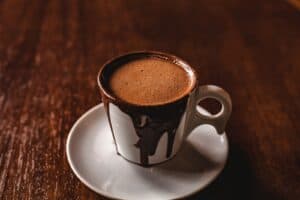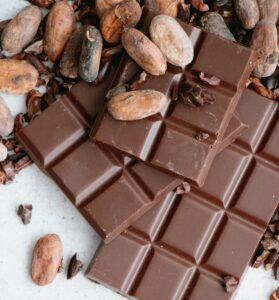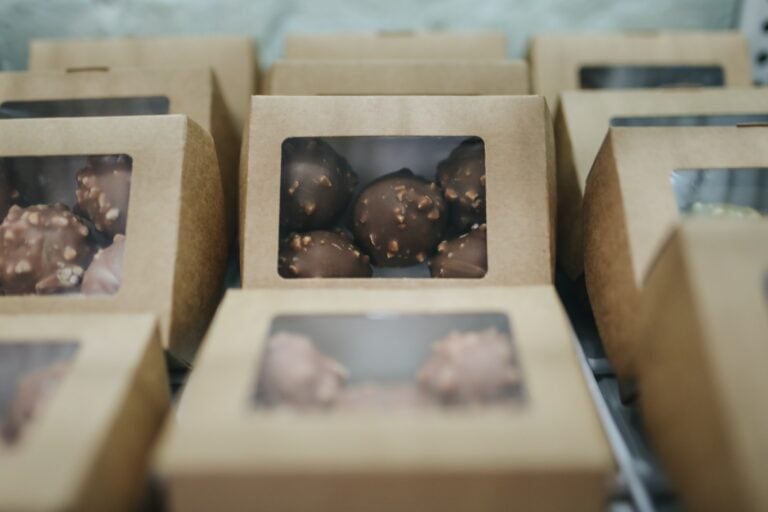Chocolate – a simple, luxurious delight associatively enjoyed by many cultures around the world. However, to dive into the deep venture, it’s vital to understand the cultural significance chocolate holds in varying societies. This post will provide a comprehensive deep dive into experiencing chocolate in different cultures.
From the Heart of Mesoamerica to the World

The history of chocolate traces back to the indigenous people of Mesoamerica. The Cocoa tree, officially known as “Theobroma Cacao,” Latin for “food of the gods,” originates from this region. The ancient Olmec culture was arguably the first to turn the cacao tree’s pods into edible form. They consumed the bean mainly as a hot beverage, grounding cocoa beans into a paste and mixing it with hot water and spices to create a precursor to hot chocolate.
Europe’s Love Affair with Chocolate
Europe’s obsession with chocolate is renowned. The Spanish were the pioneers of chocolate culture in European countries. They were introduced to the cocoa bean by the Aztecs and mixed ground cocoa beans with sugar, cinnamon, and other spices to make a hot chocolate drink, a far cry from the original bitter taste the Aztecs preferred.
Belgium is another European country deeply intertwined with the history of chocolate. Belgian chocolate, often filled with a chocolate cream filling, is well-known worldwide for its quality. Swiss chocolate is equally renowned for its dairy delicacy, and Swiss chocolatiers were the first to create milk chocolate by adding condensed whole milk to the chocolate mix.
Chocolate in the American Continent

In the modern context, the United States has a substantial chocolate culture. From cocoa powder-filled advent calendars for Christmas to chocolate bars infused with peanuts, almonds, or white chocolate, Americans consumer copious amounts of this sweet treat.
Heading south, we see that cocoa beans play a major role in South American cultures. In Costa Rica, for instance, “drinking chocolate” consists of ground cocoa beans and hot water mixed together, often served with a piece of bread. They pay homage to the hot beverage’s importance by dedicating a festival known as the “Chorotega Chocolate Culture Festival” annually.
Africa’s Impact in the Global Cocoa Sector
Africa’s role in chocolate is primarily through its contribution to the global cocoa sector. Côte d’Ivoire and Ghana are among the world’s largest cocoa bean producers. They may not have a diverse range of chocolates, but their economies are closely tied up with cocoa production.
Chocolate in Different Cultures: Unique Chocolate Traditions Around the World
In Japan, as a part of unique chocolate traditions, gifting chocolate is beyond sweet treats and has deep social implications. “Giri Choco” is a notable practice, taking place on Valentine’s Day. Giri translates to obligation, and this tradition mainly involves women presenting chocolates to their male counterparts – colleagues, superiors, friends and family members as a means of obligation or courtesy. This practice signifies their appreciation and respect for their relationships, making it a unique blend of culture and affection displayed in the form of chocolate.
On the other hand, Australia’s unique chocolate tradition puts a fun twist on how chocolate is enjoyed. As part of their cultural heritage, Australians indulge in a popular custom known as the ‘Tim Tam Slam’. To perform this age-old ritual, each end of the Tim Tam – a chocolate-coated biscuit – is slightly nibbled off, turning it into a straw. It is then used to drink a hot beverage such as coffee or hot chocolate.
The heat from the beverage melts the biscuit’s inner chocolate cream filling, creating a uniquely gooey, decadent treat. This unique way of consuming chocolate reflects Australia’s laid-back and fun-loving culture, truly indicating how chocolate is deeply engrained and celebrated across diverse societies.
Chocolate Diverse Forms in Cuisine
From a hot beverage to a glamorous dessert, chocolate’s versatility is unquestionable. The main ingredient—cocoa—is often included in a variety of foods. In Mexico, for instance, one might find cocoa being essential in their staple Mole sauce, which is drizzled over different kinds of meats for a subtle sweet twist.
Across many countries around the world, hot chocolate remains a deeply loved beverage. Traditional European hot chocolates are a mix of dark chocolate, whole milk, and sugar, often topped with a thick layer of cream.
In contrast, hot chocolate in the Caribbean nations often includes a variety of spices, such as nutmeg and cinnamon, in addition to cocoa, whole milk, and sugar. It’s not uncommon to find it mixed with sesame seeds for a bit of added crunch and flavor.
Celebrating the Sweet Legacy
The journey of cocoa from a sacred tree to a universally adored sweet treat is evidence of its cultural impact. As society continues to evolve, so does the way we consume chocolate. From enjoying a gourmet dark chocolate bar, to a comforting mug of hot chocolate, to having a blast with a ‘Tim Tam Slam’ or presenting ‘Giri Choco,’ the global love affair with chocolate transcends borders.
The Process from Cacao Trees to Chocolate

The journey from cacao trees to a bar of chocolate starts with harvesting the ripe cacao pods. Once extracted, the cocoa beans are fermented, dried, and eventually roasted. The resulting product, called chocolate, is then further processed into a thick liquid known as chocolate liquor. It’s in this process where cocoa butter is separated from the chocolate liquor. Cocoa butter is a key ingredient that gives chocolate its signature creamy texture and melt-in-your-mouth experience.
Sweet Stops at Chocolate Houses Around the World
Historically, chocolate adoration was not only confined to the kitchen. It also extended to community spaces, specifically chocolate houses, where hot chocolate could be savored while engaging in stimulating conversations. Originating in Europe in the 17th and 18th centuries, these establishments held parallels with English coffee houses or Parisian salons. They served as places of social gathering, offering a unique setting where patrons could discuss art, literature, politics, and gossip over a warm cup of chocolate-based beverages.
These age-old practices might sound like nostalgic history, but the tradition of chocolate houses are very much alive in our contemporary society. Many current-day chocolatiers throughout the world have preserved this sense of congeniality and accuracy that provides an enriching experience beyond just the taste of chocolate.
From the celebrated chocolate culture of European nations, with their historic chocolate houses, to modern gourmet brands offering bespoke chocolate tastings and experiences, the number of these social spaces is continually expanding. The continuity of these chocolate houses bears testament to the enduring love affair with chocolate globally, where it is appreciated not merely as a food but as an experience to savor.
The Health Benefits of Chocolate

The mention of chocolate often brings to mind its superior taste and the comfort it provides the palate. However, the benefits of chocolate, specifically dark chocolate, extend beyond the realms of taste. Dark chocolate is packed with numerous health benefits that make it an indulgence that is both delicious and nutritious. Its high antioxidant content, for instance, plays a crucial role in maintaining good health and well-being. Antioxidants are compounds that help reduce inflammation throughout the body, thus, helping ward off chronic diseases such as heart disease and diabetes.
Moreover, dark chocolate is also an excellent source of essential minerals that our body needs to function correctly. The high magnesium content in dark chocolate is known to help improve physical health by reducing the risk of developing high blood pressure and heart disease. Similarly, the presence of zinc and iron in dark chocolate is useful in boosting the immune system and enhancing the body’s oxygen-carrying capacity respectively. So, while we indulge in our favorite chocolate delights, we are also filling our bodies with invaluable nutrients that contribute to our overall health.
Threats to Cacao Trees: The Frosty Pod Disease
Despite their sweet product, cacao trees face numerous threats, notably the Frosty Pod disease. This disease is a disease that affects cacao trees and can reduce a farm’s yield by up to 80%. Originating in Central America, the disease is considered one of the most severe threats to global cocoa production.
The allure of chocolate is universal and ingrained in the history of many cultures. Over time, this delightful product of the cocoa tree has transformed, creating a myriad of delicious flavors for the world to relish, empowering economies, and bringing joy to our taste buds. Indulging in chocolate in its many forms allows us to take part in a sweet journey around the world!
Other suggested articles:
